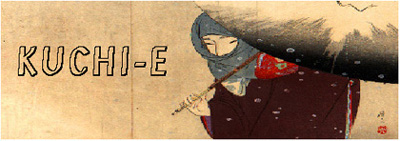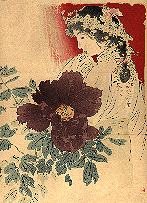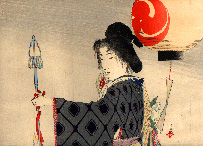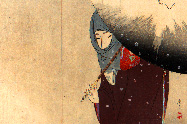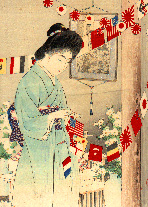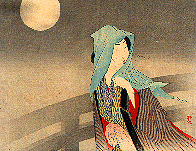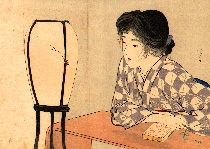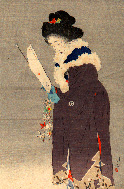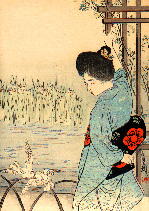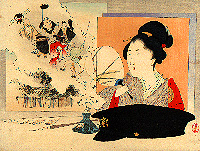Kuchi-e are woodblock-printed frontispiece
illustrations produced for publication in Japanese novels
and literary magazines at the turn-of-the-century. Many of
the leading woodblock artists of the Meiji Period worked in
this genre. The artists included Mizuno Toshikata, Ogata
Gekko, Kajita Hanko, and the young illustrator, Kaburagi
Kiyokata.
The primary subject matter of kuchi-e are
bijin - "beautiful women". Kuchi-e reflect the
romantic, idealised depiction of women that was evident
throughout the history of Ukiyo-e, but the late-Meiji Period
witnessed the development of a western influenced and more
realistic style of graphic presentation.
Kuchi-e are approximately 22 x 29 cm in size
and typically have two fold marks resulting from the manner
in which they were inserted in publications. Many kuchi-e
display deluxe printing techniques, including blind
printing, the use of powdered metals and burnishing. These
deluxe printings may have been, in part, a reaction against
the newly-introduced photographic and lithographic printing
processes which threatened the popularity of the traditional
woodblock print.
The kuchi-e pictured below are from the monthly literary
magazine Bungei kurabu (Literary Club) which began
publication in 1895. Print titles and publication dates are
courtesy of Helen Merritt and Nanako Yamada.
|
